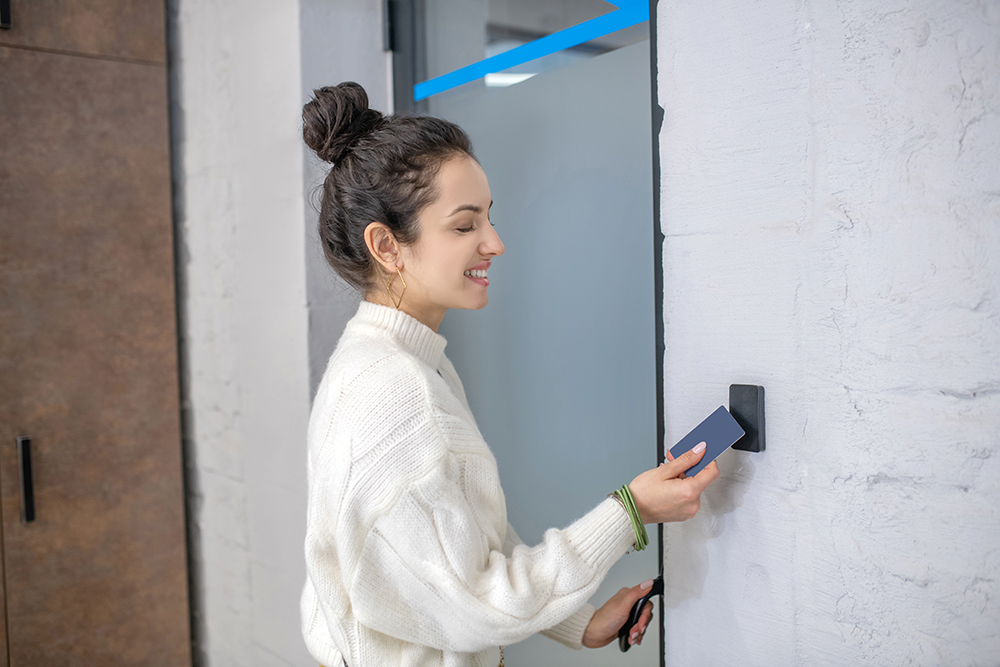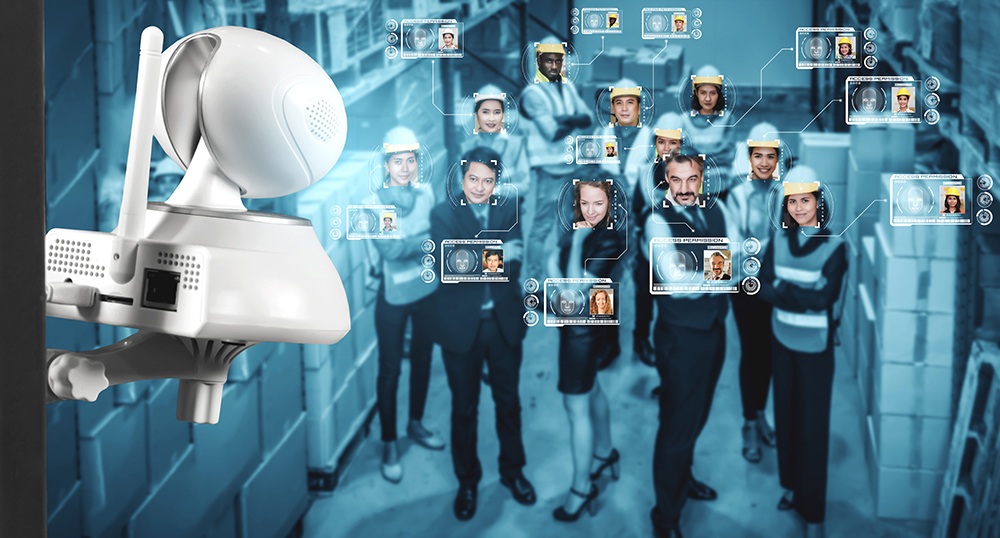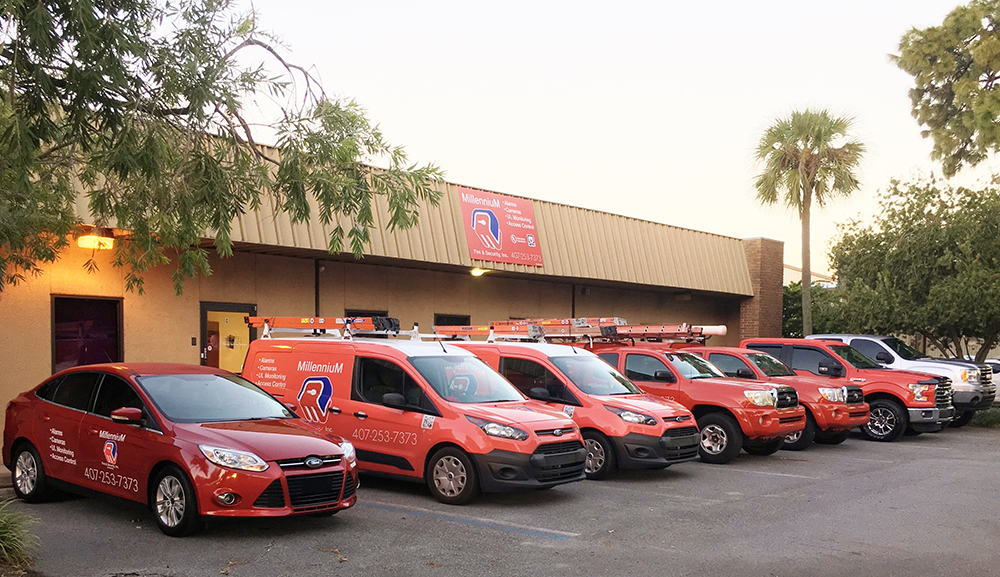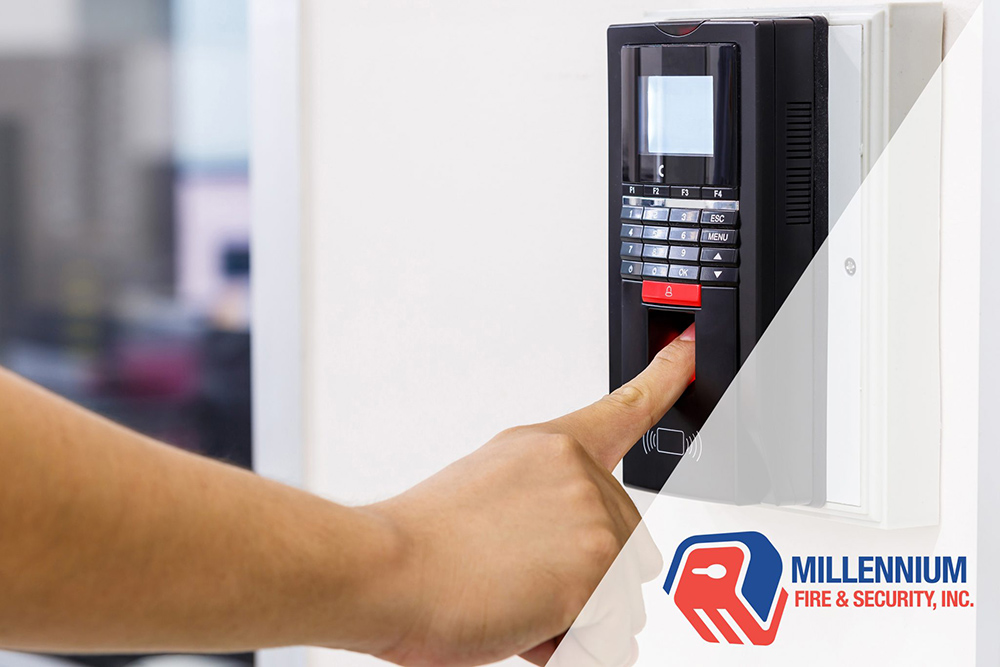Electronic access control systems are designed to protect physical assets by regulating who has access to a specific area. A door lock, for example, is a kind of access control, but technology has excelled to also include tech like:
- Retina & finger scanners
- Keycards
- Face registration
- And more
This article will serve as a guide and delve into the various types of access control systems, how they work, and their key features. Additionally, we’ll go over the factors to consider when choosing the right access control system for your needs.
What Are Electronic Access Control Systems?

Physical Access Control Systems
These systems regulate access to a specific location or facility using physical barriers, such as doors and gates. Physical access control systems can be divided into two categories, mechanical access control systems and electronic access control systems. Mechanical systems use locks and keys fashioned specifically for them, while electronics utilize RFID cards, keypads, biometric readers, or proximity readers to secure an area.
This article will focus on the many different kinds of electronic access controls and how they function.
Proximity-based Access Control Systems
These systems use proximity cards or key fobs to grant access to a specific area or asset. When a user approaches the access point with their card or key fob, the system reads the encoded information and determines whether the user has the necessary clearance to enter or not.
Biometric Access Control Systems
These systems use biometric data, such as fingerprints, facial recognition, or iris scans, to grant access to a specific area or asset. Biometric access control systems are highly secure and difficult to bypass, as they rely on unique physical characteristics that cannot be duplicated without James Bond-level methods.
Logical Access Control Systems
Logical access control systems are computer-based systems that use passwords, user IDs, and other authentication methods to control access to computer systems and networks. Logical access control systems are used to authenticate a user’s identity and grant them access to the network or system. These systems also track user activity and can be used to monitor who is accessing secure areas. Logical access control systems can also be used to enforce security policies and can be configured to prevent unauthorized access.
How Do Access Control Systems Work?

A breakdown of the key features of and processes these systems undergo are as follows.
Authentication
Authentication is the process of verifying the identity of the user attempting to gain access. Access control systems use the many different methods mentioned previously to authenticate a user’s identity.
Authorization
Once the identity of the user has been authenticated, the system will decide whether to grant or deny access based on the user’s clearance level. Access control systems can be configured to grant access to specific areas or assets based on the user’s identity or their role in the company, like a security guard or a lead programmer.
Access Points
Access points are the physical locations where users gain access to a specific area or asset. These can include doors, gates, turnstiles, and other physical barriers.
Event Logs
Access control systems maintain a record of all access events, including who accessed a specific area or asset, when they accessed it, and from which access point. This information helps to identify unauthorized entries or potential security breaches.
Integration With Other Security Systems
Access control systems can be integrated with other security devices, like surveillance cameras and alarms. The security nexus created by all these electronic devices improves response times by requiring less investigatory work in the event of a security breach.
Specific Uses for Access Controls
There are many uses for access controls, the most obvious being that it keeps customers or unauthorized personnel out of sensitive spaces in your building, like cash rooms or security offices. But there are additional uses.
Access controls can also help reduce the risk of personal injury by limiting entry to hazardous areas or equipment. For example, a factory could utilize these systems to restrict access to dangerous machinery or potentially lethal zones.
In addition to protecting physical assets and protecting employees, access control systems can also help protect sensitive data and information. In the case of tech-based businesses or government facilities, regulating access to computer systems, server rooms, and networks helps to stop data breaches and unauthorized access to sensitive information.
What to Consider When Choosing an Access Control System
 Cost
Cost
The cost of an access control system varies significantly depending on size and complexity. Small systems are very affordable, but if you need an entire building outfitted with monitored access points and linked systems, be sure to consider your budget for maintenance costs and system updates.
Security Needs
Different access control systems like key fobs and retina scanners offer different levels of security. Consider the level of security you need based on the sensitivity of the areas or assets you’re protecting.
Ease of Use
Access control systems are all designed to be as easy to use as possible, but the software framework of a key fob and a face scanner is totally different. Your security team may have more of an uphill learning curve with maintaining more advanced systems.
Scalability
Consider whether the access control system you choose can scale as your needs change. You may want to choose a system that can be easily expanded or modified as your organization grows.
Integration With Other Systems
If you have other security hardware in place, like surveillance cameras or alarms, consider whether the access control system you choose can be easily integrated with them.
Upgrade Your Security Network With Access Controls

Want to learn more? Give us a call or leave your information on our website, and we’ll get to you as soon as possible!


 Cost
Cost